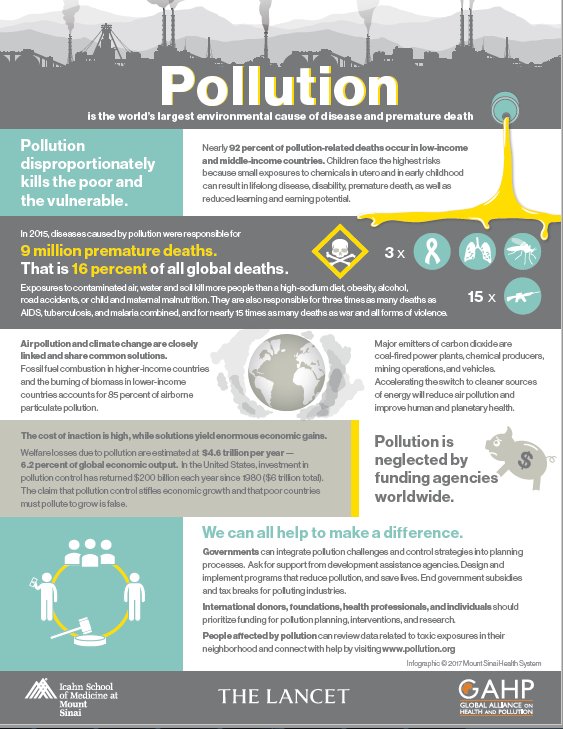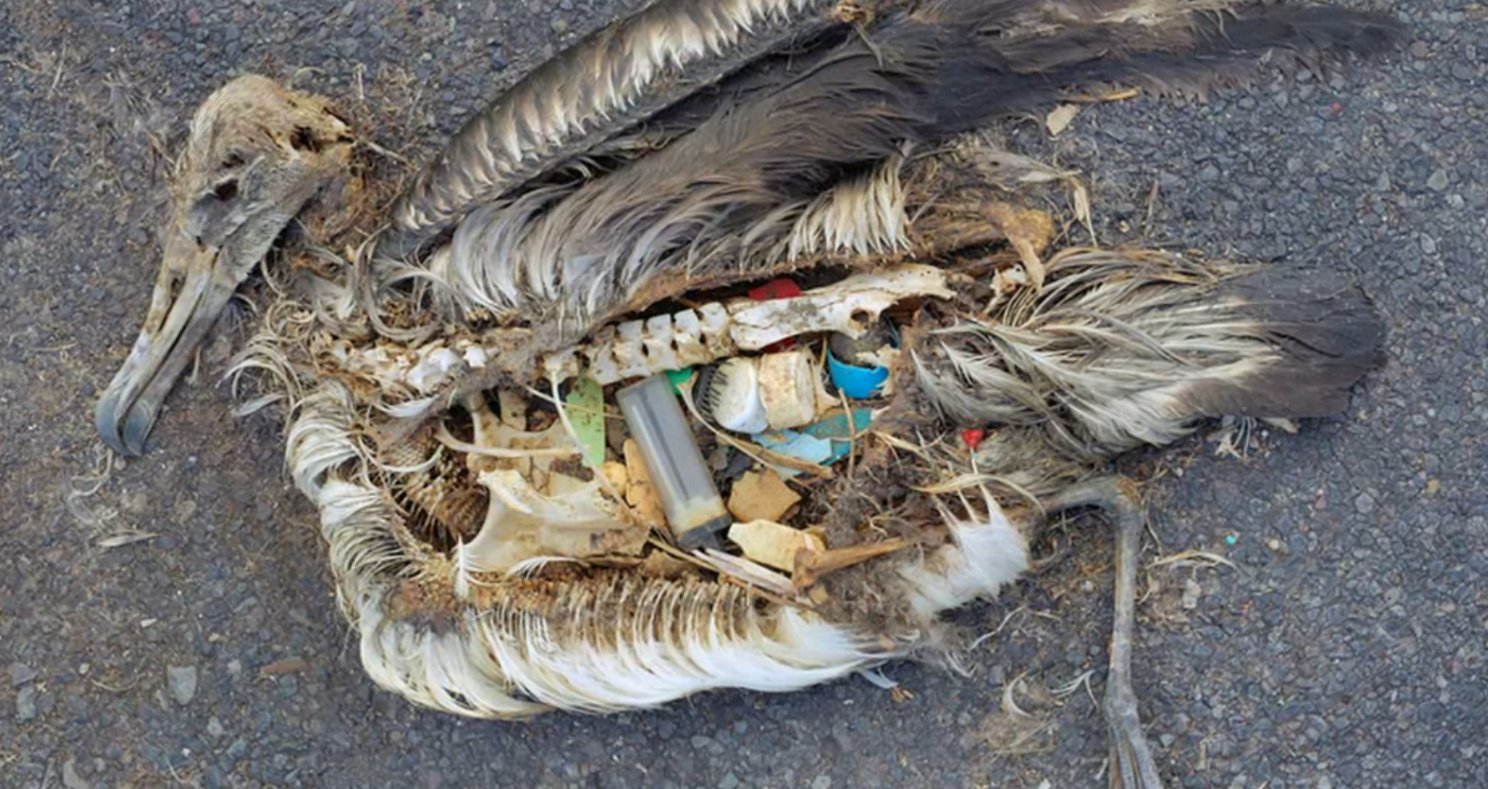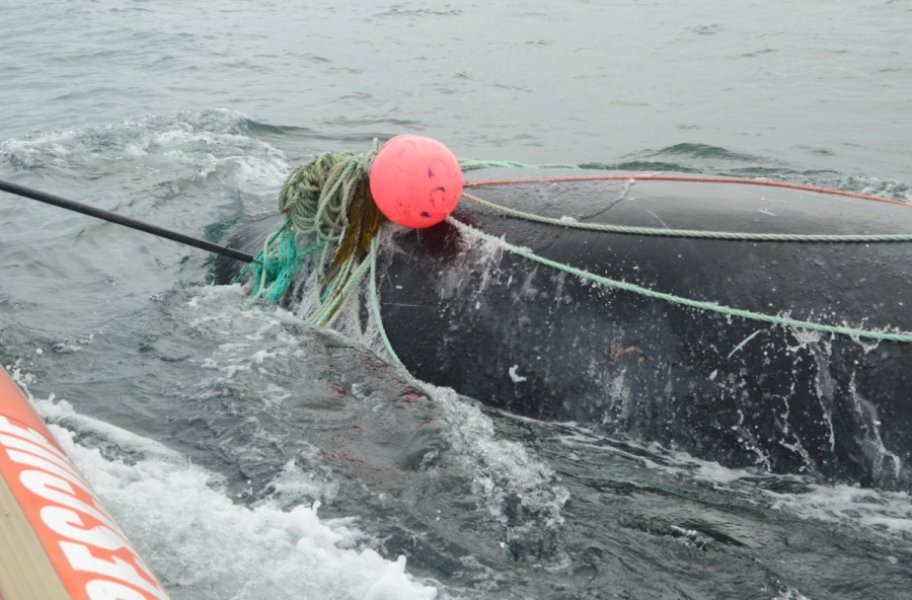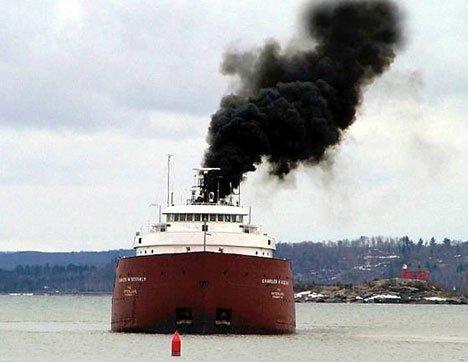STREAMS / STRANDS / STREAMS
POLLUTION
Doing damage everywhere
|
|
|
|
POLLUTION and HUMAN HEALTH
|
Pollution-and-Health-Infographic-Lancet-Mount-Sinai-2017

|
and this is only part of the catastrophe
... there is no mention of the role that modern industrialized agriculture has in producing pollution and doing serious damage to the environment. The application of fertilizers and pesticides helps to increase crop yields, but it also contributes substantially to polluted runoff into streams and rivers. Modern meat production is a methane producer and there are also solid and liquid waste pollutants from the industry. Monoculture is having all sorts of side effects including soil degradation.
|
|
Pollution-and-Health-Infographic-Lancet-Mount-Sinai-2017
|
Open PDF ...
|
|
POLLUTION KILLING WILDLIFE
|
Dead sea bird stomach full of plastic

|
...this is not a viable food chain
This is an appalling image ... and it has now got to the stage where everything on the planet is polluted with plastic. In addition to these large pieces of plastic that are easy to dientify, there are also very small particles of plastic that have broken down in size, but still persist as plastic and a dangerous pollutant. Microplastic particles are now showing up in humans because of the pervasiveness of plastic and fact that it does not degrade as most other materials do.
|
Dead whale tangled in plastic fishing gear

|
...this is not a viable food chain
We have no idea how big this problem is ... we only see incidents like this when they happen close to shore or close to a ship. The ocean is vast, and mostly out-of-sight. We do know that plastics of all sorts are now reaching every part of the ocean, and it is likely that much of the life in the oceans is being effected in very negative ways.
|
|
SOFT DRINKS / BOTTLED WATER
|
Plastic bottles from Coca Cola / PepsiCo / Nestle /et al

|
More plastic bottle from Coca Cola / PepsiCo / Nestle /et al

|
Soft drinks and bottled water have been great for investors
... but while this industry has been great for investors and the corporate executives in these industries it is pretty clear that the profits have come at a considerable social and environmental cost that are prevailing system of metrics has ignored for decades and continues to ignore. Some of the issues include (1) an excessive concentration of the industry that makes a mockery of market competition, (2) far too much sugar and sugar substitutes in the drinks which has precipitated all sorts of health issues including diabetes, especially for at risk children, (3) massive use of plastic bottles that end up junking up everywhere ... both on land and now the oceans.
As the cosio-enviro-economic system presently works, investors and executives are allowed to benefit from the conventional economic profit performance, while not being held accountable for anything else. If the system enabled 'clawback' to investors and executives for the social and environmental damage associated with their operations and their products, the decision making would be very different and the world would be a very much better place.
|
A huge industry operating mainly out-of-sight of land

Capt Rabinder Singh Marine Surveyor & Consultant, SUKHPAL MARITIME TRANSPORT , SINGAPORE
|
|
The #shipping industry is so big that, if you added shipping to the list of the world's most polluting countries, it would come in sixth place.
|
Less particulates than in the past ... but GHGs continue

|
Electricity is essential to run the modern world
... but economic growth without some serious changes in the way that electricity is generated will change the world in ways that cannot be predicted and are likely to be catastrophic. Converting electric power generation from coal to natural gas reduces particulate emissions, but does little to reduce GHG emissions. Combustion of any carbon based material is going to produce carbon dioxide, and releasing this into the atmosphere is going to have an impact on the environment ... there is no getting away from this fact.
The full cost of electricity taking into consideration the social impact and the environmental impact is very high compared to the price that prevails. With the prevailing way of thinking about cost, price and value, rapid change to alternative ways of producing electicity cannot get funded because they are 'uneconomic', but with true value analysis, the alternatives are clearly better.
|

|
|
|
|

